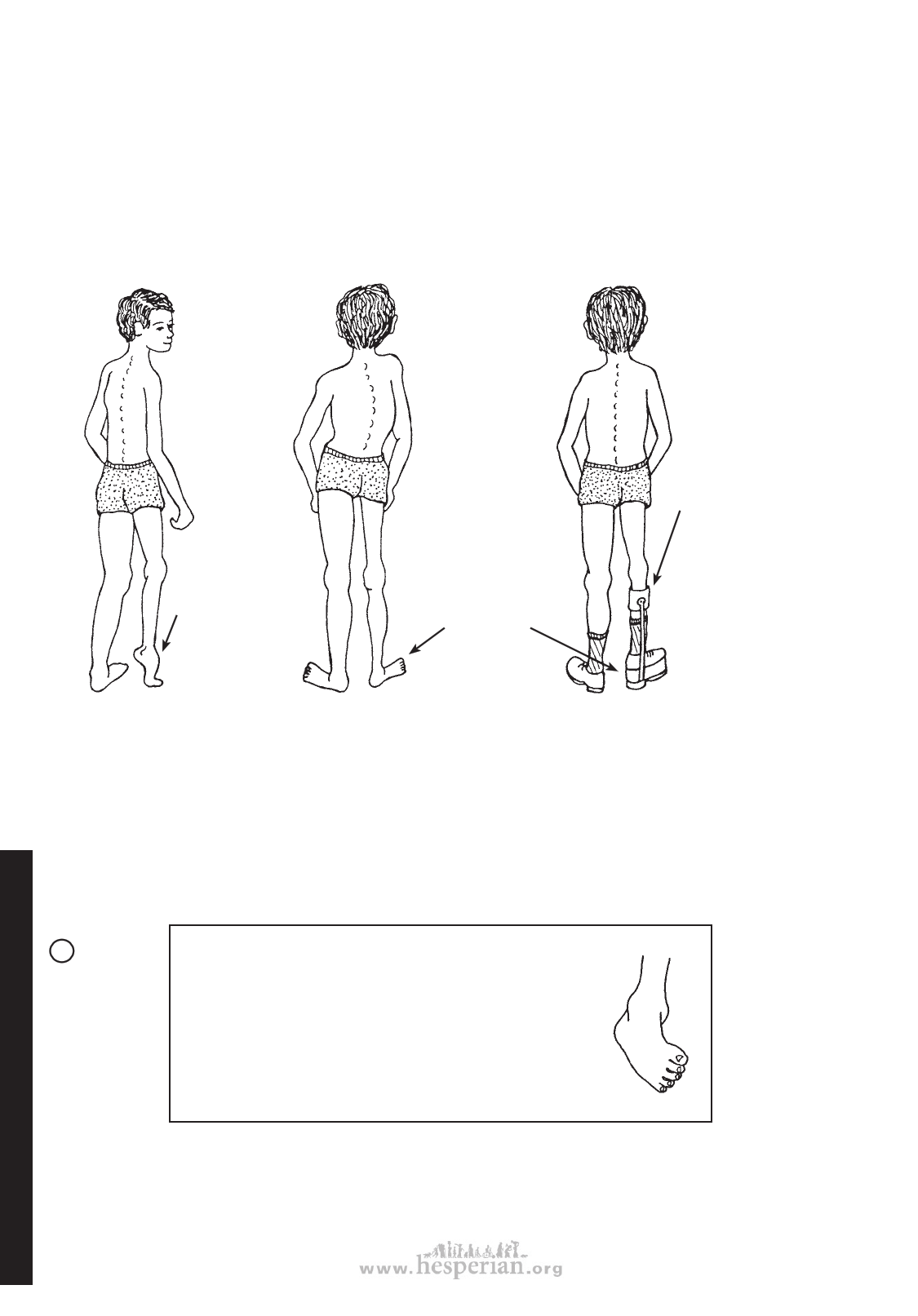
530 CHAPTER 56
EVALUATING WHICH DEFORMITIES SHOULD BE
CORRECTED AND WHICH SHOULD NOT
PART 3 of this book, in addition to aids and equipment, also discusses methods for
correcting joint contractures, which are discussed in Chapter 59. Just as you need to
decide if a brace is appropriate, you need to decide whether correcting a contracture
will actually help a child. Although many contractures increase difficulty for a child,
some may actually help and should be left uncorrected. For example:
In a child
with polio,
the weaker
leg is
often
shorter.
The foot hangs
down and often
develops
a tiptoe
contracture
which, in effect,
makes the leg
longer.
If we correct
the foot
contracture,
the leg will,
in effect,
become ‘shorter’.
This can cause
tilting of the
hips, a spinal
curve, and more
awkward walking.
contracture
corrected
To correct the
hip tilt and
spinal curve,
the child will
need a lift on
the shoe, and
probably a
brace too.
This usually
makes walking
more difficult,
and the
disability more
noticeable, than
before the
contracture was
corrected.
For this child it may be best NOT to correct the contracture.
Other examples of contractures that are sometimes more beneficial than harmful
are finger contractures in persons with hand paralysis (see p. 183) and tightness of
back muscles in persons with spinal cord injury or muscular dystrophy (see p. 375).
CP CAUTION: In children with spastic cerebral palsy,
sometimes orthopedic surgeons perform operations
to correct contractures or awkward positions, without
completely evaluating the effects on the children.
Often children find it harder to walk or function after
the surgery. Always seek the opinion of therapists
and other orthopedists before deciding to have the
operation.
Before deciding to correct any contractures or deformities, try to be
sure that the correction will help the child to do things better.
Disabled village Children